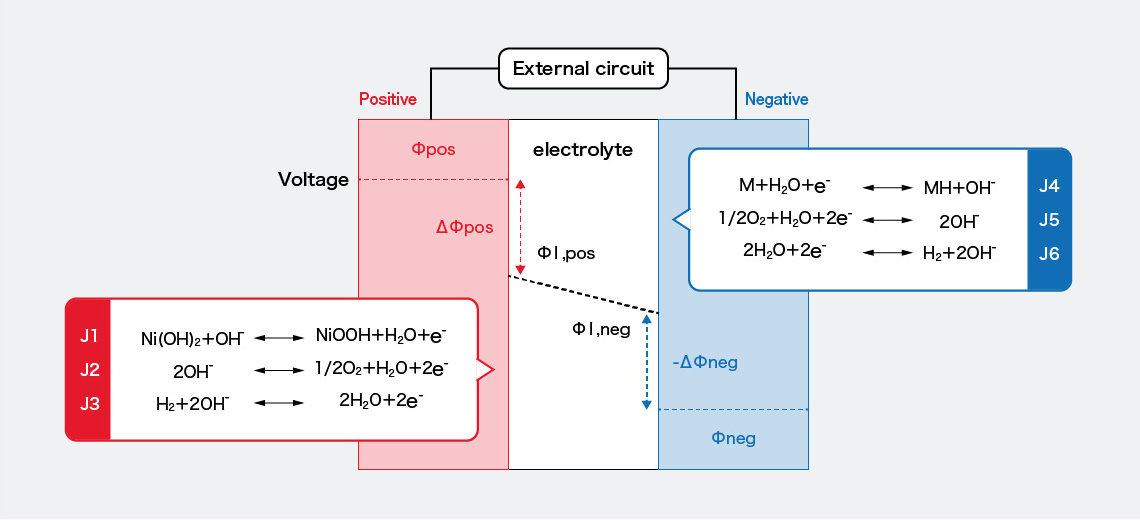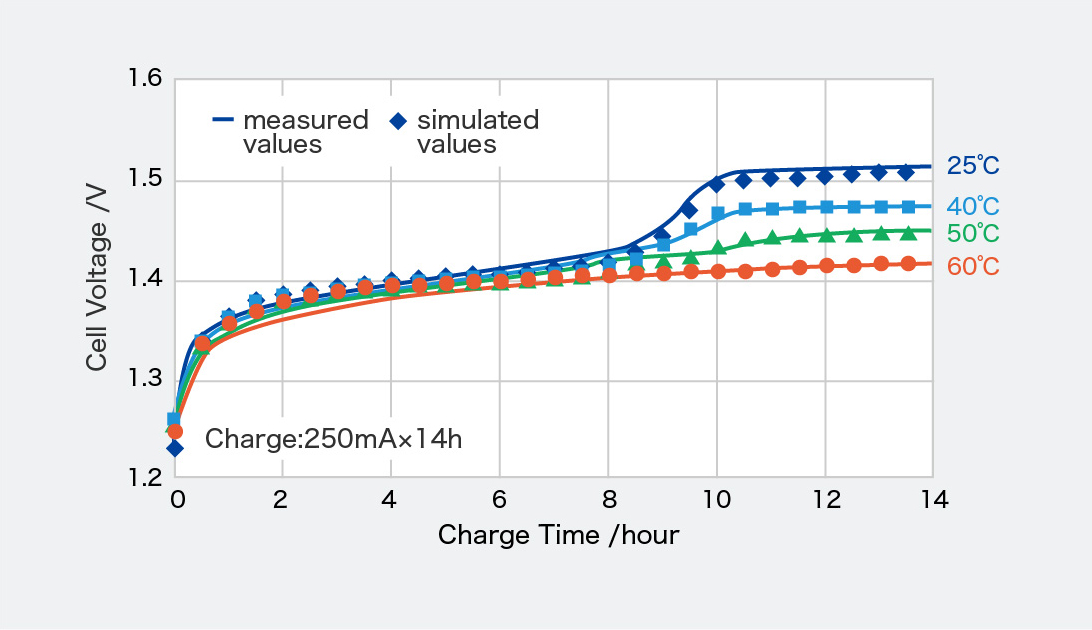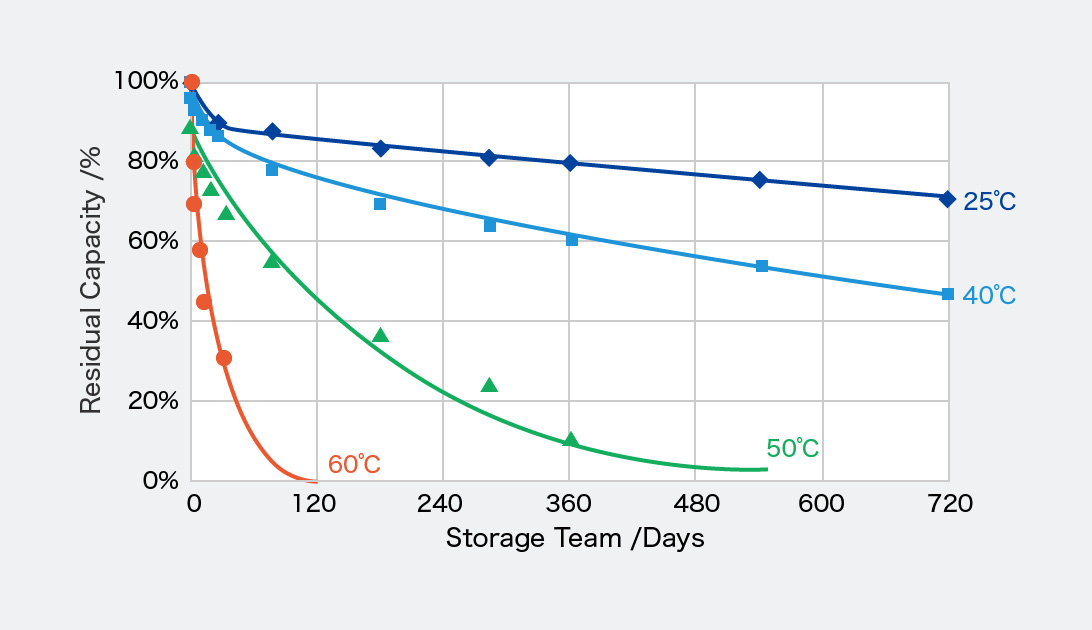

Battery performance simulation technology
High precision battery performance simulation technology
In battery design and development, it is necessary to repeat the process of making actual prototypes and evaluating their characteristics. However, evaluating battery characteristics requires a lot of time and equipment.Therefore, battery characteristic simulation technology is required to accelerate and streamline development.
Currently, various methods for simulating battery operation have been proposed, and this technology is also being applied to battery charge/discharge control and power management.
FDK's original technology
FDK calculates the progress of chemical reactions at the electrode interface based on the theoretical formula for nickel-metal hydride batteries shown in the figure below and as well as the charge/discharge mechanism analyzed in-house.
Using the results of our calculations, we are developing a method to predict the voltage curve and storage characteristics under any charge/discharge conditions and temperature.

Nickel-metal hydride battery charge/discharge reaction model
Nickel-metal hydride battery charge/discharge curve simulation
We compared the predicted and measured charging curve values when a nickel-metal hydride battery was charged with a constant current while changing the temperature, as shown in the figure on the right.
By considering the unique reaction phenomenon, high prediction accuracy was achieved under a wide range of usage conditions.
By considering the unique reaction phenomenon, high prediction accuracy was achieved under a wide range of usage conditions.

Comparison of simulated values and measured values of charge curves
Nickel-metal hydride battery charge retention simulation
The figure on the right is a comparison of the simulated and measured values of the remaining capacity when a nickel-metal hydride battery is stored for a long period of time.
The simulation value estimated from the self-discharge mechanism of the nickel-metal hydride battery is almost the same as the measured value even after approximately 2 years (720 days).
The simulation value estimated from the self-discharge mechanism of the nickel-metal hydride battery is almost the same as the measured value even after approximately 2 years (720 days).

Comparison of simulated values (line) and measured values (points) of the remaining capacity of a battery during long-term storage
